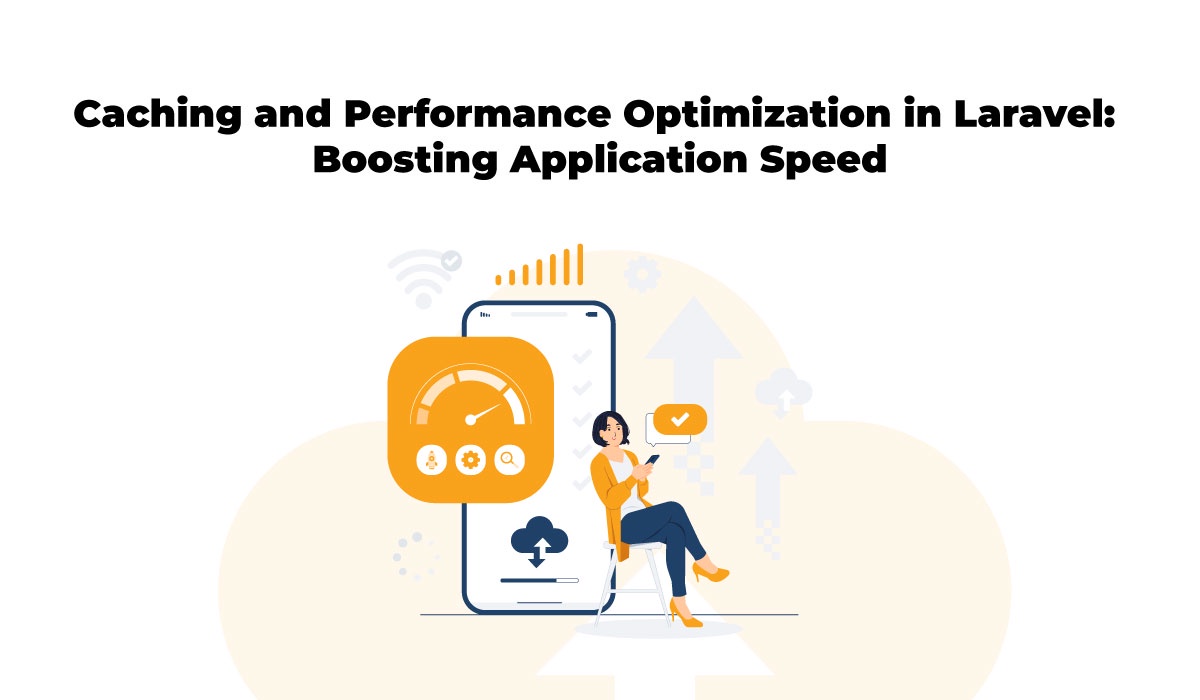In today's fast-paced digital world, web application performance is paramount. Users expect websites and applications to load quickly and respond instantly to their interactions. To meet these expectations, developers must employ various strategies to optimize performance. One such strategy is caching, and in the world of PHP web development, Laravel provides a powerful set of tools to implement caching effectively. In this blog post, we'll explore caching and performance optimization in Laravel and how it can significantly boost your application's speed.
Understanding Caching
Before delving into how Laravel handles caching, let's first understand what caching is and why it's crucial for web applications.
Caching is the process of storing frequently accessed data in a temporary storage location, often faster to access than the original source, to improve response times. In web applications, this typically involves storing the output of expensive database queries or complex computations.
Imagine a scenario where your web application needs to fetch a large set of data from a database and process it before displaying it to the user. If this data doesn't change frequently, fetching and processing it every time a user requests it can lead to slower response times and increased server load. This is where caching comes in.
Caching stores the processed data in a cache store (such as Redis or Memcached) or in the server's local storage for quick retrieval. When a user requests the same data again, the application checks the cache first. If the data is found in the cache, it's served directly to the user, bypassing the time-consuming data retrieval and processing steps.
Laravel's Caching Mechanisms
Laravel simplifies caching by providing a clean and intuitive API to work with various caching mechanisms, opined a Laravel app development company in Bangalore. Here's a brief overview of some of the caching mechanisms supported by Laravel:
-
File Caching: Laravel allows you to cache data in files stored on the server. While it's the simplest caching method, it might not be the best option for high-traffic applications, as reading/writing files can be slow.
-
Database Caching: You can also cache data in the database, which is useful for scenarios where you want to persist cached data across multiple requests or server restarts.
-
Redis Caching: Redis is an in-memory data store known for its speed and versatility. Laravel has built-in support for Redis, making it an excellent choice for caching frequently accessed data.
-
Memcached Caching: Memcached is another in-memory caching system supported by Laravel. It's particularly useful for distributed caching and can significantly improve your application's performance.
-
APC and Array Caching: Laravel supports alternative caching mechanisms like APC and in-memory arrays for simpler scenarios.
How to Use Caching in Laravel
Using caching in Laravel is straightforward. Here's a step-by-step guide to help you get started:
Step 1: Configure Your Cache
Laravel's configuration files are stored in the config directory. To configure your caching preferences, open the config/cache.php file. You can specify the cache store, connection details, and other settings here. For example, to use Redis as your cache store, set the 'default' cache store to 'redis'.
'default' => env('CACHE_DRIVER', 'redis'),
Step 2: Cache Data
Once you've configured your cache, you can start caching data in your Laravel application. Here's an example of caching the result of a database query for a limited time:
$users = Cache::remember('cached-users', 60, function () {
return DB::table('users')->get();
});
In this example, the Cache::remember method checks if the 'cached-users' key exists in the cache. If it does, it returns the cached data; otherwise, it executes the closure function and stores the result in the cache with a TTL (time to live) of 60 minutes.
Step 3: Retrieve Cached Data
To retrieve cached data, simply use the Cache::get method with the appropriate key:
$users = Cache::get('cached-users');
If the data is in the cache, you'll get it instantly; otherwise, you can fall back to fetching it from the original source.
Step 4: Clear Cache
Clearing the cache is essential to keep it up-to-date. Laravel provides a simple way to clear specific cache items or flush the entire cache:
// Clear a specific cache item
Cache::forget('cached-users');
// Flush the entire cache
Cache::flush();
Benefits of Caching in Laravel
Caching offers several benefits for your Laravel application:
-
Improved Performance: By reducing the need to repeatedly fetch and process data, caching leads to faster response times and improved user experience.
-
Reduced Database Load: Caching offloads your database server, which can be especially beneficial for database-intensive applications.
-
Scalability: With caching, your application can better handle increased traffic and scale more efficiently.
-
Consistency: Cached data ensures a consistent user experience, even during periods of high traffic or database issues.
-
Cost Savings: Improved performance means you can serve more users with fewer server resources, potentially reducing hosting costs.
Cache Invalidation Strategies
While caching provides significant performance benefits, it's essential to implement a proper cache invalidation strategy. Cache invalidation ensures that cached data remains accurate and up-to-date. In Laravel, you can use various methods to invalidate cache items:
-
Manual Invalidation: You can manually invalidate cache items using the
forgetmethod, as shown earlier. This is useful when you know that specific data has changed. -
Cache Tags: Laravel supports cache tags, allowing you to group related cache items together. You can then invalidate all cache items with a specific tag when relevant data changes.
Cache::tags('users')->flush();
- Time-Based Invalidation: Set an appropriate TTL when caching data to ensure that it automatically expires and refreshes at a specified interval.
Cache::put('key', 'value', now()->addMinutes(30));
Conclusion
Caching is a crucial tool for optimizing the performance of Laravel applications. By reducing the load on your database and minimizing redundant computations, caching can dramatically boost your application's speed and responsiveness. Laravel's elegant caching API makes it easy to implement caching in your projects, and with the right cache invalidation strategy in place, you can ensure that your cached data remains accurate and up-to-date. So, don't wait; start caching and supercharge your Laravel application today!


No comments yet